38 Scrumptious North American Sauces To Spice Up Any Meal
North American sauces represent a vibrant culinary tapestry that reflects diverse cultural influences and regional tastes.
Bold flavors and unique combinations define these condiment creations that transform ordinary meals into extraordinary experiences.
Regional kitchens across the continent have developed signature styles that tantalize taste buds with unexpected ingredient pairings.
Innovative chefs continuously experiment with traditional recipes, blending techniques from different cultural backgrounds.
Passionate food lovers appreciate how these sauces can elevate simple dishes from mundane to memorable.
Ingredients sourced locally often inspire new interpretations that challenge conventional flavor expectations.
Each sauce tells a story of migration, adaptation, and culinary creativity that connects communities through shared gastronomic experiences.
Excited to learn more about these 38 delectable North American sauces that promise to revolutionize your cooking:
Great North American Sauces for Every Dish
North American kitchens boast a world of sauces, from smoky barbecue to creamy ranch. These condiments add excitement and depth to everything from salads to sandwiches.
Mole Poblano
Mole poblano is Mexico's most celebrated sauce, combining over twenty complex ingredients like chocolate, chiles, and spices into a rich, deep-flavored masterpiece originating in Puebla during the 16th century.
Spanish and indigenous culinary traditions merged to create this legendary sauce at Santa Rosa convent when monks prepared a special dish for a visiting bishop.
Roasted chile seeds become intense flavor bombs that transform the sauce's profile with smoky undertones.
Charred spices and carefully ground ingredients contribute to its distinctive complexity.
Chocolate adds unexpected depth and subtle sweetness to the sauce.
Traditional preparation involves meticulous roasting and grinding of multiple components.
Chicken enchiladas serve as the classic vehicle for this remarkable sauce.
Rice typically accompanies the dish to balance its intense flavors.
Mojo De Ajo
Mojo de ajo is a zesty, flavor-packed garlic sauce originating from Latin American and Caribbean culinary traditions.
Mexican and Cuban kitchens embrace this simple yet powerful condiment made with olive oil, crushed garlic, salt, and citrus juice.
You can drizzle it over seafood like pejelagarto, a Mexican fish prized for its unique taste.
Versatile and bold, the sauce elevates grilled meats, roasted vegetables, tostones, and yucca with its intense garlic punch.
Restaurant and home cooks blend the ingredients until smooth, creating a tangy sauce that transforms ordinary dishes.
Citrus adds brightness, while olive oil provides richness and depth.
Mediterranean and Latin American influences shine through its straightforward preparation.
Mole Negro
Mole negro stands as Mexico's most intricate sauce, originating from Oaxaca with a rich culinary heritage that blends complex flavors and techniques.
Dark chocolate and multiple dried chili peppers form its signature base, creating an intensely deep and nuanced flavor profile that distinguishes it from other Mexican moles.
Skilled Oaxacan cooks meticulously combine ingredients like hoja santa, cinnamon, cumin, cloves, onions, garlic, cilantro, pumpkin and sesame seeds, and dried fruits to craft this legendary sauce.
Traditionally prepared during special celebrations and family gatherings, mole negro requires significant time and expertise to prepare perfectly.
Each ingredient is carefully roasted and ground to develop maximum depth and complexity.
Mexican families often pass down their unique mole negro recipes through generations, preserving cultural culinary traditions.
Restaurants and home kitchens serve this rich sauce over meats, enchiladas, and other dishes, never consuming it alone.
Mole
Mole are complex Mexican sauces rooted in indigenous traditions, featuring ground Mexican chile peppers blended with a remarkable array of ingredients like chocolate, nuts, seeds, fruits, and spices.
Aztecs originally called this intricate sauce "molli" meaning mixture, symbolizing culinary creativity and cultural depth.
Mole poblano from Puebla stands as the most famous version, incorporating chocolate for rich earthy undertones.
Oaxaca celebrates seven distinct mole styles, ranging from verde with cilantro to negro combining dark chiles, chocolate, and dried fruits.
Stone mortar and pestle called molcajete traditionally crush ingredients, maintaining authentic preparation methods.
Each mole variation reflects regional ingredients and cooking techniques, showcasing Mexico's diverse gastronomic landscape.
Regional differences create unique flavor profiles, transforming simple ingredients into sophisticated sauces.
Mole represents more than food - it embodies Mexico's historical culinary evolution and cultural heritage.
Seven Moles Of Oaxaca
Oaxacan Moles are complex, multilayered sauces representing Mexico's profound culinary heritage with seven distinct regional variations.
Mole negro stands out as the most sophisticated version, featuring dark chocolate and an intricate blend of over 20 ingredients that create a deep, rich flavor profile.
Mole rojo, also called mole poblano, ranks second in popularity with its robust blend of chili peppers and subtle chocolate undertones.
Mole coloradito offers a slightly sweeter experience through mashed plantains and moderate spice levels.
Mole verde incorporates fresh coriander and ground pumpkin seeds for a green-hued sauce with herbaceous notes.
Mole amarillo uses tomatillos and masa harina to develop its distinctive yellow color and tangy taste.
Pipian
Pipian is a spicy Mexican green mole sauce renowned for its distinctive nutty flavor and complex blend of ground seeds.
Originating in Oaxaca as one of its seven famous moles, this sauce spreads across Mexico with regional variations in every household.
Roasted or dried pumpkin and squash seeds form its core ingredient, creating a rich, earthy base.
Dried chiles, cumin, coriander, and garlic contribute layers of intense flavor to the sauce.
Mexican cooks carefully grind these ingredients into a smooth, vibrant mixture.
Lemon juice helps thin the sauce to a more liquid consistency.
Traditional preparations involve carefully blending and roasting ingredients to maximize depth and complexity.
Green mole typically accompanies chicken, pork, or vegetables, transforming simple proteins into extraordinary dishes.
Honey Garlic Sauce
Honey garlic sauce blends sweet and tangy flavors into a versatile Canadian-style condiment that transforms ordinary meats into extraordinary dishes.
Canadian cuisine embraced this simple sauce as a signature flavor enhancer for barbecued meats like ribs, chicken wings, and meatballs.
Brown sugar provides deep caramel undertones while honey adds natural sweetness to the blend.
Garlic delivers a sharp, pungent kick that balances the sugary elements.
Soy sauce contributes umami depth and a slight saltiness to the mixture.
Ginger introduces a subtle warmth and complexity to the sauce's overall profile.
Commercial and homemade versions share similar ingredient combinations, making it an accessible and popular condiment across North America.
Creole Sauce
Creole sauce represents a spicy, tangy blend of Louisiana's culinary heritage that transforms seafood and meat dishes with its robust flavor profile.
Louisiana's rich culinary landscape birthed this versatile sauce through a fusion of regional ingredients like tomatoes, onions, bell peppers, and garlic.
Caribbean and Southern United States cooking traditions deeply influenced its development, creating a complex sauce with multiple variations.
Cayenne pepper provides the signature heat that distinguishes Creole sauce from other regional condiments.
Fresh ingredients form the backbone of this sauce, which balances sharp and mellow notes seamlessly.
Worcestershire sauce occasionally enhances its depth, adding complexity to its already intricate taste.
Honey Dill
Honey dill sauce electrifies Manitoba's culinary scene as a creamy, tangy condiment blending sweet honey, rich mayonnaise, and aromatic dried dill.
Restaurant owner Roy Winkler accidentally invented this signature sauce while attempting to replicate another restaurant's recipe in Winnipeg.
Saskatchewan and Manitoba restaurants quickly embraced the unexpected creation as a beloved dipping companion for chicken fingers and sweet potato fries.
Canadian diners now enjoy its versatile flavor profile with salmon, roasted vegetables, and surprisingly, even spaghetti.
Regional restaurants feature the sauce as a signature item that reflects Manitoba's unique food culture.
Food enthusiasts seek out this distinctive condiment for its unexpected combination of ingredients.
Winnipeg restaurants continue to celebrate the sauce's accidental origins.
Carolina Gold
Carolina Gold sauce originates from South Carolina barbecue traditions with a distinctive mustard-based recipe that transforms grilled meats into flavor-packed dishes.
German immigrants initially developed this golden-hued condiment as a tangy alternative to traditional tomato sauces in Southern cuisine.
Vinegar creates the sauce's signature thin consistency while complementing core mustard components.
Brown sugar and honey balance sharp mustard notes with subtle sweetness.
Hot sauce adds a subtle heat that intensifies the sauce's complex profile.
Regional pitmasters typically use Carolina Gold most successfully with pulled pork and roasted chicken.
Southern barbecue enthusiasts consider this sauce a crucial accompaniment to many grilled meats.
German culinary influences shine through this uniquely South Carolina creation.
Poutine Gravy
Poutine gravy embodies Canada's most beloved comfort food sauce, designed specifically to drench crispy french fries and cheese curds with rich, savory flavor.
Quebec culinary experts carefully craft this signature brown sauce using beef or chicken stock as a foundational ingredient.
Butter and flour create a smooth roux that thickens the base, while cornstarch ensures a glossy, consistent texture.
Ground pepper adds subtle warmth and depth to the gravy's complex profile.
Traditional preparation involves slow simmering to develop maximum flavor intensity.
Brown and velvety, the sauce transforms simple ingredients into a hearty national dish.
Restaurant kitchens take pride in their unique gravy recipes, often keeping specific techniques closely guarded.
Mole Blanco
Mole blanco are exquisite white sauces from Mexican cuisine that celebrate special occasions like Easter and Christmas with their unique nutty complexity.
Spanish almonds, peanuts, pine nuts, garlic, onion, and habanero peppers create its signature creamy texture and rich flavor profile.
Coconut oil enhances the sauce's luxurious consistency, making each bite a sensory experience.
Mixtec region in Oaxaca traditionally serves this sauce with pipiorchitapi, an edible tree flower that adds subtle botanical notes.
Chicken broth provides depth and warmth to the sauce's overall composition.
White nuts dominate the ingredient list, contributing to its distinctive pale appearance.
Careful preparation involves grinding and blending ingredients into a smooth, velvety consistency.
Regional cooks consider mole blanco a delicate culinary art form that requires precision and skill.
Red-Eye Gravy
Red-eye gravy is a classic Southern sauce featuring a unique blend of ham drippings and coffee that creates a distinctive, thin liquid accompaniment to country ham.
Southern kitchens traditionally prepare this rustic sauce by frying country ham and using its pan drippings mixed with brewed coffee or water.
Regional debates continue about whether authentic red-eye gravy requires coffee or can be made simply with pan juices.
Ham remains the primary protein served alongside this flavorful sauce, which gets its name from its dark, rich appearance.
Some cooks add black pepper or hot sauce to enhance the gravy's depth of flavor.
Restaurants across Alabama, Georgia, and Mississippi frequently feature red-eye gravy on their menus.
Breakfast plates often showcase red-eye gravy as a signature Southern culinary tradition.
Mole Manchamantel
Mole manchamantel is a vibrant Oaxacan sauce notorious for staining tablecloths with its rich, complex flavors.
Originating from Mexico's culinary heartland, this unique mole blends sweet and spicy elements through an intricate mix of dried ancho chilies, fruits like pineapple and pears, and savory ingredients including chorizo and nuts.
Traditional preparations involve grinding multiple components into a thick, aromatic sauce that demands careful cooking techniques.
Oaxacan families guard their personal mole recipes, each version carrying subtle variations passed through generations.
Typical accompaniments include roasted chicken, tender pork, warm tortillas, and fluffy rice.
Almonds, cloves, black peppercorns, and cinnamon contribute depth to its multilayered taste profile.
Skilled cooks simmer the sauce until it reaches a perfect consistency, creating a dish that represents Oaxacan culinary traditions.
Mole Amarillo
Mole amarillo is a vibrant Oaxacan sauce distinguished by its complex yellow-hued flavor profile combining multiple indigenous Mexican ingredients.
Originating from Oaxaca's rich culinary traditions, this sauce features an intricate blend of dried chili peppers, annatto seeds, aromatic spices like cinnamon and cumin, and unique elements such as licorice-tasting hoja santa leaves.
Each Oaxacan household maintains a distinctive mole amarillo recipe passed through generations, with ingredients carefully ground and simmered to create a thick, golden sauce.
Traditional preparation involves combining garlic, onions, yellow tomatillos, and corn flour to develop its signature consistency.
Families serve this versatile sauce with diverse proteins including chicken, fish, and mussels.
Regional cooks also pair mole amarillo with vegetables like chayote and popular dishes such as empanadas and tamales.
Mole Coloradito
Mole coloradito is a rich, complex Oaxacan sauce distinguished by its deep red color and intense chocolate-based flavor profile.
Mexican cooks carefully blend multiple ingredients like chili peppers, spices, and dark chocolate to create its signature taste.
Originating in Oaxaca, this traditional sauce represents one of seven famous regional mole varieties.
Roasted chili peppers provide a smoky foundation for the sauce's depth and complexity.
Carefully ground sesame seeds and dark chocolate contribute to its smooth, velvety texture.
Sweet plantains and aromatic spices like cinnamon, allspice, and cloves enhance the sauce's multilayered flavor.
Typically served over chicken or turkey, mole coloradito transforms simple proteins into extraordinary dishes.
Mole De Queretaro
Mole de Queretaro is a rich, complex Mexican sauce originating from Queretaro state that blends multiple ingredients into a deeply flavorful culinary creation.
Regional cooks craft this distinctive sauce by carefully toasting and grinding pasilla and ancho chili peppers as its foundational element.
Traditional preparation involves combining roasted peppers with chicken stock, bolillo bread, and a mix of nuts including peanuts, walnuts, and almonds.
Chocolate adds subtle depth and complexity to the sauce's robust profile.
Dry-roasted tomatoes contribute additional layers of smoky intensity to the mixture.
Lard helps bind the ingredients and create a smooth, consistent texture.
Raisins provide a hint of unexpected sweetness that balances the sauce's savory notes.
Mexican families typically serve this mole over chicken, creating a memorable dining experience that showcases regional cooking techniques.
Fry Sauce
Fry sauce is a creamy Utah-born condiment blending ketchup and mayonnaise into a tangy pink spread that perfectly complements french fries and other fried foods.
First popularized in Salt Lake City, this signature sauce quickly became a regional favorite across the western United States.
Fast food restaurants and diners embraced the simple mixture as a standard dipping option.
Burger joints and drive-ins began offering fry sauce as an alternative to plain ketchup.
Restaurant patrons appreciated its richer flavor compared to traditional condiments.
Some regional variations include added ingredients like worcestershire sauce or spices.
Utah residents consider the sauce a staple accompaniment to french fries and potato wedges.
Burger King and other national chains now feature fry sauce on their menus in response to its growing popularity.
White Barbecue Sauce
White barbecue sauce revolutionizes southern grilling with its unique mayonnaise-based recipe originating in Alabama during 1925.
Bob Gibson created this creamy white sauce at his Decatur restaurant, Big Bob Gibson's Bar-B-Q, transforming traditional barbecue condiments.
Distinguished by its zippy blend of mayonnaise, vinegar, salt, and black pepper, the sauce delivers a tangy punch to grilled meats.
Alabama pitmasters traditionally drizzle this white sauce over smoked chicken and pulled pork, giving dishes a distinctive flavor profile.
Restaurants across northern Alabama embrace this regional specialty, making it a staple of local barbecue culture.
Home grillers now replicate the recipe, spreading its popularity beyond its original location.
Food historians consider white barbecue sauce a significant innovation in southern cooking techniques.
Southern barbecue enthusiasts continue to celebrate this distinctive sauce as a hallmark of Alabama's culinary heritage.
Steak Sauce
Steak sauce represents a bold American condiment with a complex flavor profile combining sweet, tangy, and spicy notes.
Originating in the United States, this dark brown or orange sauce typically features tomatoes, vinegar, and raisins as core ingredients.
Multiple regional variations exist, offering unique taste experiences for beef lovers.
Worcestershire sauce and tamarind sometimes enhance its traditional recipe.
Spices like cloves, black pepper, and mustard add depth and warmth to the mixture.
Commercial brands like A1 and HP have popularized this sauce worldwide.
Grilled and roasted meats especially benefit from its rich, multidimensional flavor.
Lobster Sauce
Lobster sauce delivers a surprisingly mellow flavor profile despite its seafood-inspired name, originating in North American Chinese restaurants with a unique blend of ingredients.
Chicken stock forms its foundational base, creating a light and savory sauce that rarely includes actual lobster.
Garlic, ginger, and green onions provide aromatic depth to its complex flavor structure.
Eggs and starch contribute to its silky smooth texture, while fermented beans add subtle umami notes.
Some regional variations incorporate pork mince and soy sauce for additional complexity.
Traditional recipes blend these components into a versatile sauce that complements various protein dishes.
Restaurants across Canada and United States frequently feature this adaptable sauce in their Chinese-inspired menu selections.
Culinary creativity allows home cooks and professional kitchens to experiment with ingredient proportions and personal interpretations.
Sos Pwa
Sos pwa are traditional Haitian bean sauces crafted through a centuries-old culinary technique featuring pureed beans ground in apilon, a native mortar and pestle.
Creole cooking methods define this versatile sauce's unique preparation, which varies in color and texture depending on bean selection.
Haitian families transform different bean varieties like black, red, or white beans into smooth, rich purees with distinctive regional characteristics.
Salt, garlic, and sometimes onions enhance the sauce's robust flavor profile.
Cooking techniques passed through generations ensure authentic preparation in Haitian households.
Regional differences influence ingredient proportions and specific bean choices.
Rural communities maintain traditional grinding methods using wooden mortars.
Haiti's agricultural heritage directly connects to this sauce's cultural significance as a staple accompaniment to many dishes.
Jezebel Sauce
Jezebel sauce represents a zesty Southern condiment blending sweet and spicy flavors through its unique combination of pineapple preserves, apple jelly, mustard, and horseradish.
Regional cooks from Gulf Coast states like Mississippi and Louisiana crafted this tangy sauce as a versatile accompaniment for ham, pork, and other meats.
Cayenne and black pepper add sharp heat to the smooth, glossy mixture.
Pineapple preserves provide natural sweetness that balances the mustard's pungency.
Horseradish contributes a distinct, sharp kick to the complex flavor profile.
Traditional recipes vary slightly between families and regions.
Southern kitchens typically serve Jezebel sauce as a condiment or glaze for various proteins.
Ajilimojili
Ajilimojili is a fiery Puerto Rican condiment that electrifies meals with its bold, zesty punch of flavors.
Puerto Rican kitchens commonly use this vibrant sauce as a powerful marinade and dipping companion for grilled meats and seafood.
Blending hot chili peppers, garlic, coriander, and peppercorns creates its signature intense flavor profile.
White vinegar and lime juice add sharp, tangy notes that balance the sauce's heat.
Olive oil helps smooth the mixture into a consistent puree during preparation.
Salt enhances the sauce's complex flavor dimensions.
Serving the sauce well-chilled maximizes its refreshing and spicy characteristics.
Salsa De Chile Pasilla
Salsa de chile pasilla delivers a smoky, complex flavor profile rooted in Central Mexican cuisine.
Dark, wrinkled pasilla peppers form the sauce's foundation, carefully toasted on a griddle to enhance their rich, earthy notes.
Garlic and white onions join the peppers, creating a balanced blend of sharp and deep tastes.
Salt and water help mellow the intense pepper heat while maintaining the sauce's robust character.
Mexicans commonly use this versatile condiment to enhance grilled meats, tacos, and many traditional dishes.
Each batch reflects the unique touch of its creator, making salsa de chile pasilla a deeply personal culinary expression.
Salsa De Chile Cascabel
Salsa de chile cascabel is a smoky, nutty Mexican sauce distinguished by its unique cascabel chili peppers with a deep, complex flavor profile.
Cascabel chiles bring a mild to medium heat that creates a rich, earthy taste when toasted on a traditional comal or griddle.
Mexican cooks carefully turn the peppers during roasting to prevent burning and ensure an even, intense char.
Garlic and ripe tomatoes blend with the roasted chiles to create a smooth, rustic sauce.
Salt enhances the sauce's natural flavors and balances the peppers' warmth.
Restaurants and families often serve the salsa as a classic accompaniment to enhance meal experiences.
Chocolate Gravy
Chocolate gravy is a rich, velvety Southern delicacy that transforms ordinary breakfast biscuits into an indulgent morning treat.
Southern families have long cherished this unique sauce, blending cocoa powder, sugar, flour, milk, and butter into a smooth, decadent topping.
Originating in Appalachian and Southern kitchens, the gravy straddles the texture between fudge sauce and chocolate pudding.
Sunday morning gatherings often feature this beloved sauce as a special comfort food.
Mountain and rural communities have passed down the recipe through generations.
Southern hospitality shines through this simple yet extraordinary breakfast tradition.
Mojito Isleno
Mojito isleno sparks Puerto Rican culinary excitement with its zesty blend of vibrant ingredients that transform simple condiments into an explosive sauce.
Olive oil creates a smooth base for this tangy mixture of chopped olives, bell peppers, and tomatoes.
Vinegar adds sharp brightness while capers contribute briny depth to the sauce's complex flavor profile.
Fresh garlic and onions provide robust aromatics that elevate every bite.
Hot peppers deliver a signature spicy kick that distinguishes this sauce from other Caribbean condiments.
Herbs like bay leaves weave additional layers of nuanced seasoning throughout the mixture.
This versatile sauce pairs perfectly with grilled meats, seafood, and traditional Puerto Rican dishes.
Pique Criollo
Pique criollo electrifies Puerto Rican cuisine with its fiery blend of hot chili peppers and vinegar, creating a versatile condiment that transforms simple dishes into explosive flavor experiences.
Families across Puerto Rico craft unique versions of this spicy sauce, each recipe reflecting personal taste and culinary traditions.
Fresh ingredients like olive oil, herbs, onions, pineapple chunks, and garlic cloves add depth and complexity to the base mixture.
Home kitchens and restaurants use pique criollo as a dynamic accompaniment to meats, seafood, and rice dishes.
Puerto Rican communities worldwide continue preserving this zesty condiment as a crucial element of their gastronomic heritage.
Salsa Arriera
Salsa arriera is a fiery Mexican sauce born from the rugged traditions of Central Mexico's mule drivers, distinguished by its intense heat and simple preparation.
Serrano chili peppers form the core of this robust condiment, carefully toasted on a comal until charred and blistered.
Mule drivers historically favored this sauce for its bold flavor and ability to enliven basic meals during long journeys.
White onions, garlic, and salt join the roasted peppers, creating a rough paste traditionally ground in a molcajete.
Cold water helps blend the ingredients into a powerful sauce that packs significant punch.
Mexican cooks prepare this sauce by hand, following generations-old techniques that preserve its authentic character.
Each batch delivers a unique blend of smoky, spicy flavors that reflect regional culinary heritage.
Wojapi
Wojapi is a sacred Native American sauce rooted in Lakota culinary traditions from South Dakota, crafted from crushed chokecherries thickened with flour.
Tribes harvest wild chokecherries during late summer, transforming them into a rich, deep burgundy sauce with intense fruity flavors.
Indigenous communities use wojapi as a versatile condiment and ceremonial food, with each batch connecting generations through ancient preparation methods.
Chokecherries hold significant cultural importance, offering medicinal properties and spiritual significance beyond their culinary use.
Families traditionally prepare wojapi during communal gatherings, stirring the sauce in large pots over open fires.
Native elders pass down specific techniques for selecting perfect chokecherries and achieving ideal sauce consistency.
Traditional preparation involves mashing berries, straining seeds, and slowly simmering with minimal added ingredients.
Wojapi serves as a vital link between Lakota people and their ancestral food practices, symbolizing resilience and cultural preservation.
Sos Ti-Malice
Sos ti-malice is a fiery Haitian condiment that ignites taste buds with its bold blend of scotch bonnet peppers and aromatic spices.
Caribbean kitchens celebrate this vibrant sauce as a staple accompaniment to grilled meats and seafood.
Traditional recipes combine oil, tomato sauce, and zesty citrus juice for a punchy flavor profile.
Haitian cooks carefully balance heat from scotch bonnet peppers with layers of herbs like thyme and parsley.
Onions, cloves, salt, and black pepper provide depth and complexity to the sauce's intense character.
Lemon or lime juice adds a bright, tangy dimension that cuts through the pepper's sharp heat.
Sos ti-malice transforms ordinary meals into extraordinary culinary experiences with its explosive flavor.
Old Sour
Old sour defines a zesty Caribbean condiment originating in Key West and Bahamian cuisine, traditionally crafted from fermented lime juice and salt.
Sailors and fishermen first developed this tangy sauce as a simple preservation method for their fresh catches.
Bird peppers originally enhanced its sharp flavor profile before modern variations emerged.
Maritime cultures embraced old sour as a quick way to season and preserve seafood without refrigeration.
Salt and lime juice create a powerful fermentation process that transforms the basic ingredients into a pungent condiment.
Bahamian kitchens still consider old sour an essential table sauce for grilled fish and seafood dishes.
Coastal communities maintain the technique as a testament to their resourceful culinary heritage.
Mole Zacatecano
Mole zacatecano represents a complex Mexican sauce celebrated for its deep, smoky flavor profile crafted from regional Zacatecas ingredients.
Chipotle and ancho chili peppers provide intense heat and richness to this traditional preparation.
Brown sugar balances the sauce's spicy elements with subtle sweetness.
Pork shoulder serves as the primary protein, absorbing the sauce's multilayered seasonings.
Garlic, onions, cloves, and black peppercorns contribute robust aromatic dimensions to the mixture.
Cinnamon adds warmth and depth to the sauce's overall character.
Corn oil helps blend ingredients smoothly while tortillas and plantains provide textural complexity.
Mexican culinary traditions shine through this intricate sauce that transforms simple ingredients into a remarkable gastronomic experience.
Mole Chichilo
Mole chichilo ranks as a distinctive Oaxacan sauce distinguished by its deep, smoky flavor profile and complex preparation method.
Dark and intense, this traditional mole combines chilhuacle and ancho chili peppers as its primary flavor foundation.
Chefs carefully roast and blend multiple ingredients including tomatoes, tomatillos, and avocado leaves to create its unique taste.
Beef stock provides rich undertones while corn tortillas help thicken the sauce's consistent texture.
Spices like cloves, cumin, and black peppercorns contribute additional depth and complexity.
Lard adds a subtle richness that enhances the overall mouthfeel of the sauce.
Authentically prepared in Oaxaca, mole chichilo represents one of seven regional mole varieties.
Mexican culinary traditions preserve this intricate sauce as a testament to regional cooking techniques.
Henry Bain
Henry Bain sauce originated as a signature condiment created by a renowned maitre d' at Kentucky's prestigious Pendennis Club for game meat dishes.
Louisville restaurant patrons quickly embraced this tangy sauce featuring a complex blend of ketchup, chili sauce, Worcestershire sauce, and Major Grey's mango chutney.
Its unique flavor profile perfectly complements beef tenderloin and cocktail meatballs, offering a rich and zesty taste experience.
Southern cuisine enthusiasts particularly enjoy spreading it over cream cheese as a quick appetizer.
Developed in the early 20th century, the sauce reflects traditional Kentucky culinary creativity.
Restaurant guests continue to request this flavorful sauce at special events and dinner gatherings.
Kentucky's culinary heritage shines through this simple yet memorable condiment.
Pique Verde Boricua
Pique verde boricua is Puerto Rico's fiery green condiment that electrifies any dish with its bold, zesty flavor profile.
Puerto Rican kitchens celebrate this sauce as a powerful blend of Caballero and Cubanelle peppers mixed with fresh herbs like cilantro and culantro.
Green peppers and garlic create a spicy base while olive oil and lime juice balance the intense heat.
Versatile and vibrant, pique verde boricua adds a punch of Caribbean flavor to rice, beans, and root vegetables.
Restaurants and families across Puerto Rico share this sauce as a beloved culinary staple.
Fina’Denne’
Fina'denne' is a fiery Guamanian condiment bursting with bold island flavors that transforms ordinary meals into zesty culinary experiences.
Soy sauce forms the savory base of this traditional sauce, blending seamlessly with sharp white vinegar and bright citrus notes from fresh lemon juice.
Hot peppers add intense heat and complexity to the mixture, while diced onions provide a crisp, pungent undertone.
Locals drizzle this versatile sauce over grilled meats, steamed rice, and fresh seafood or serve it as a standalone dipping sauce.
Native Chamorro families have passed down this recipe through generations, preserving its authentic taste and cultural significance.
Restaurants across Guam proudly feature fina'denne' as a staple accompaniment to many dishes.
What Ingredients Are Used in Traditional North American Sauces?
Traditional North American sauces often combine a mix of local ingredients and culinary influences, featuring staples such as:
What Sauces Are Commonly Served With Meat, Fish, or Vegetables in North America?
Sauces play a vital role in North American cuisine, adding flavor, moisture, and complexity to a wide range of dishes. Depending on the main ingredient - meat, fish, or vegetables - different sauces are traditionally paired to enhance the overall taste experience:
These sauces reflect the diverse culinary landscape of North America, balancing bold flavors with comforting richness.

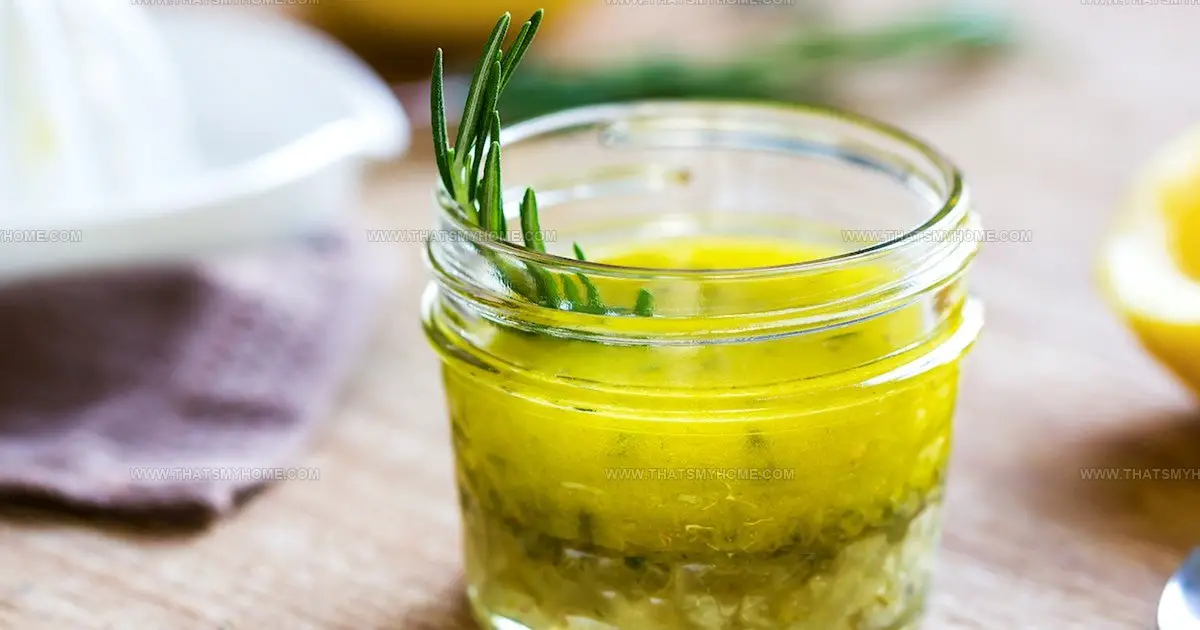
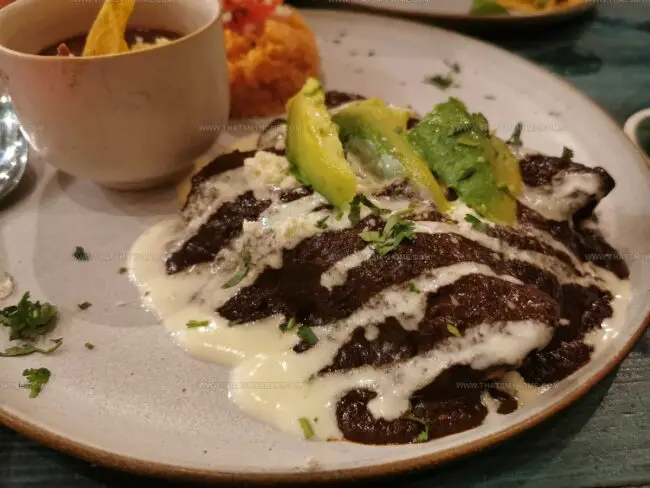
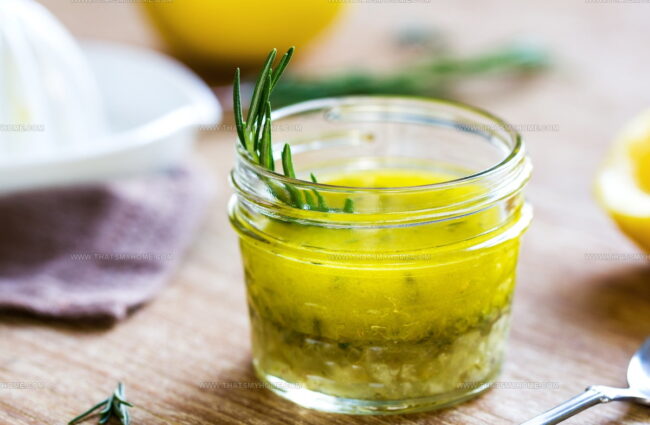
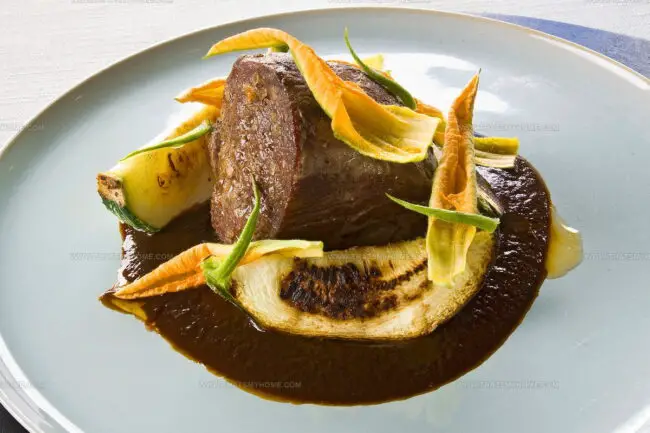
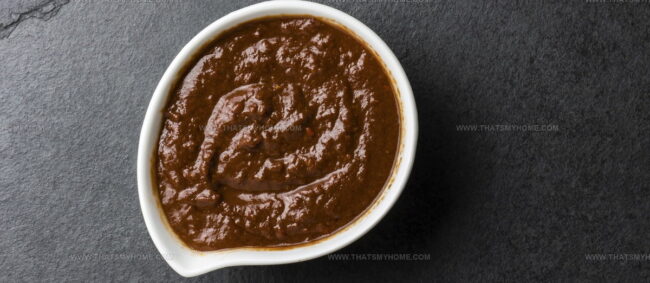
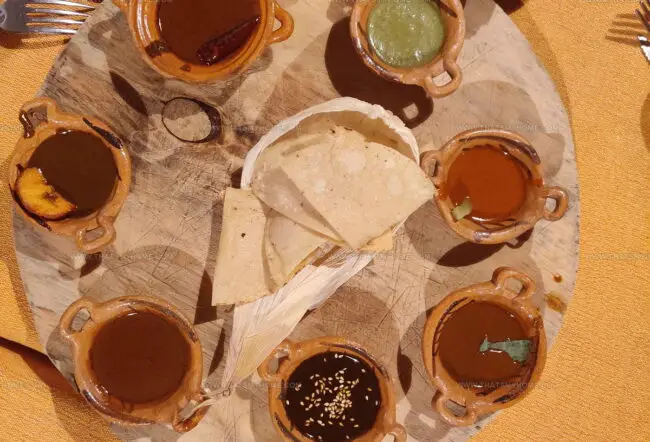


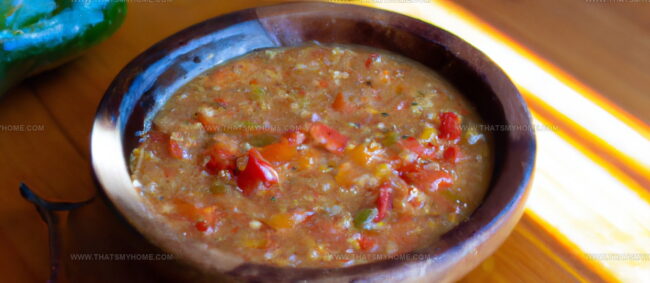


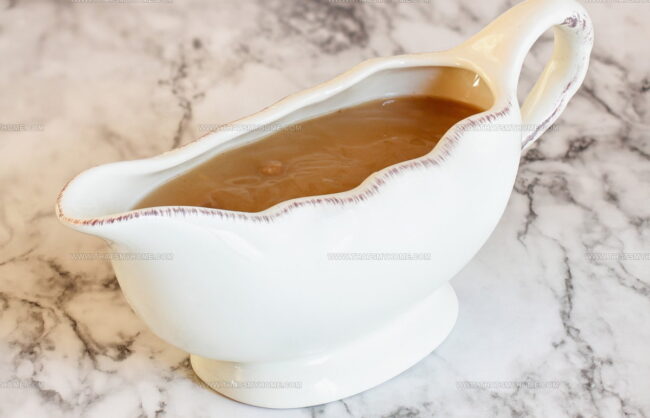
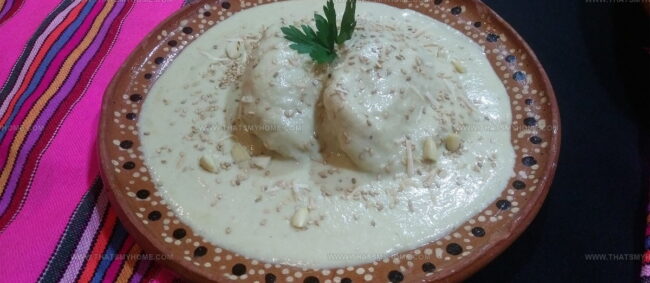
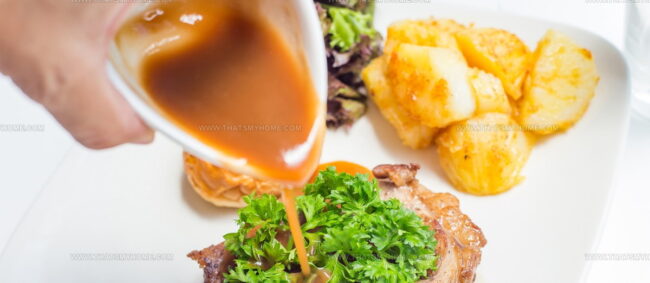
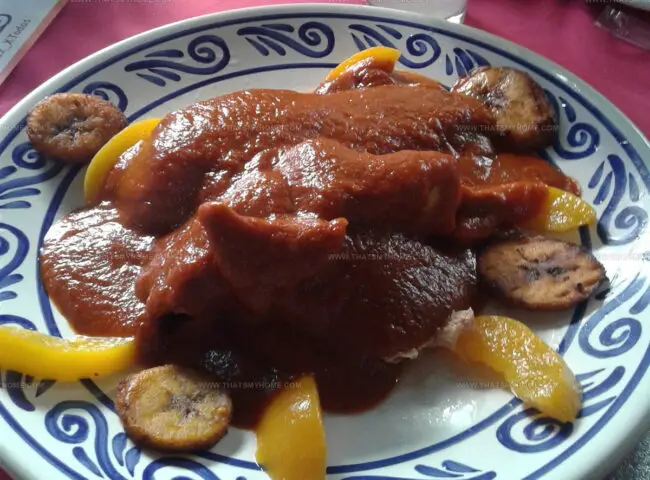
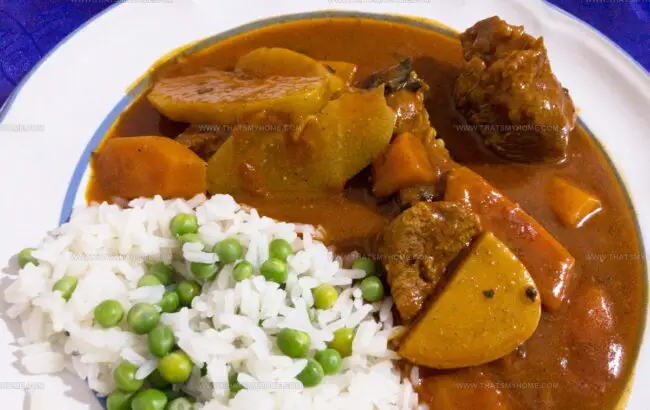
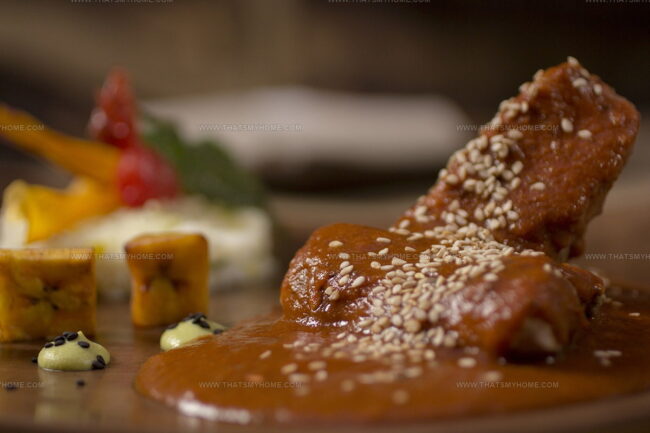


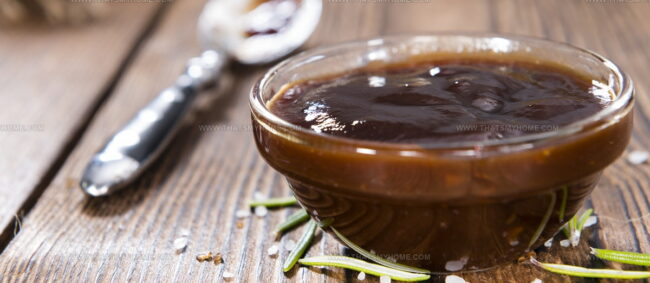
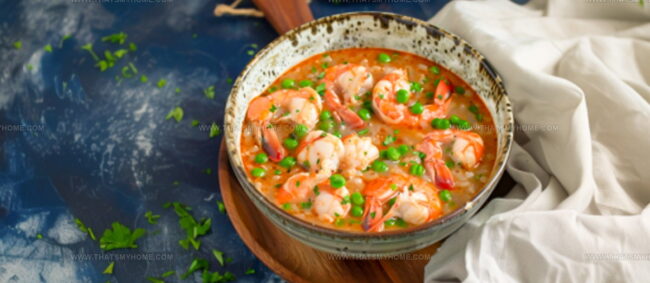
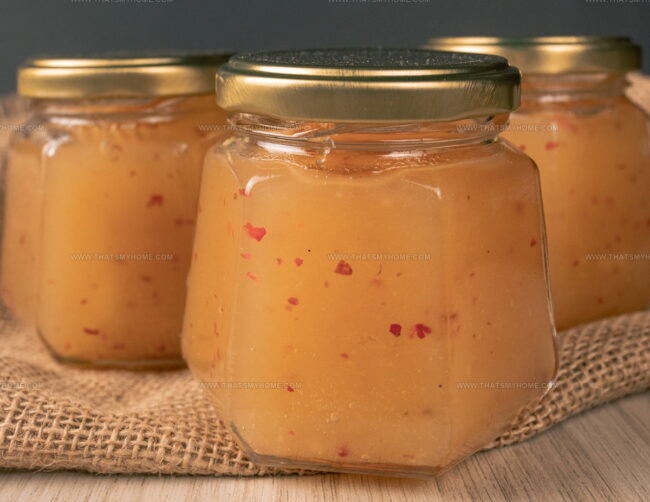
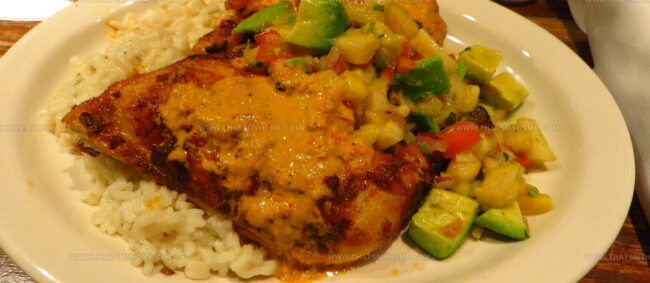
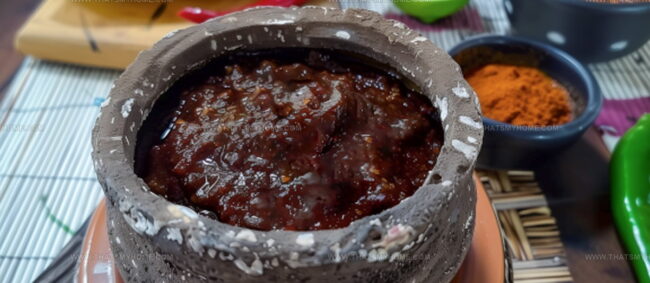
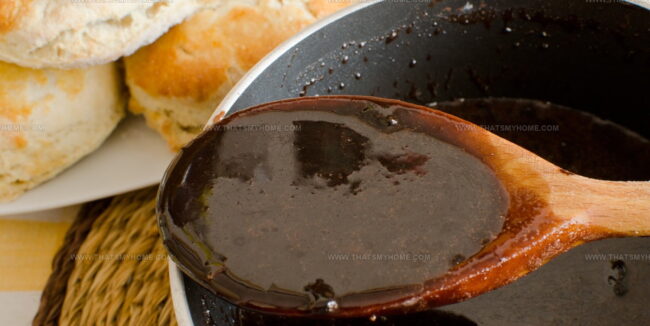

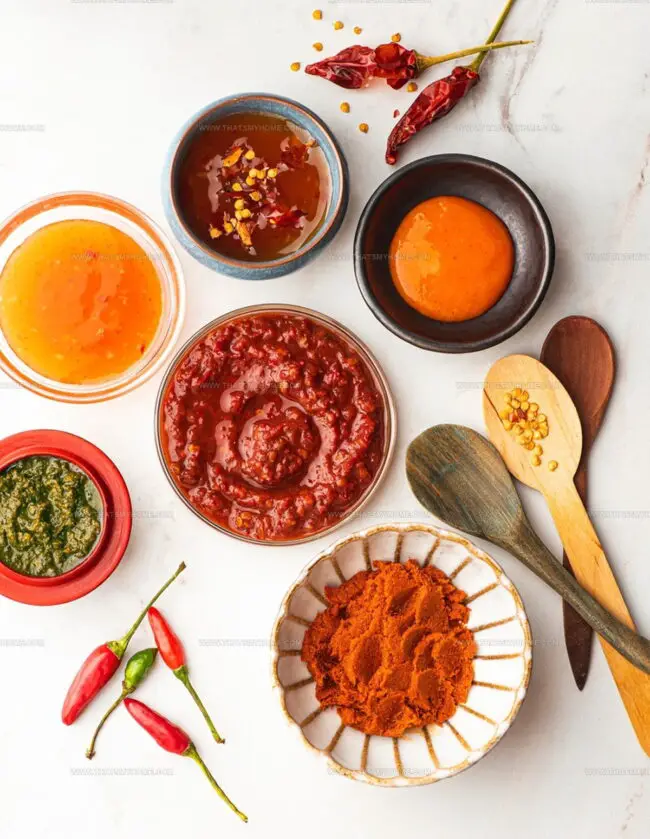
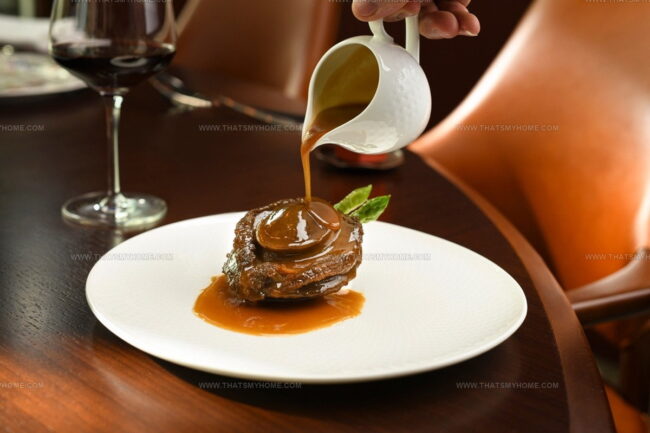
Mary Ellen
Founder, Pastry Chef & Recipe Developer
Expertise
Education
Savannah Technical College
Mary Ellen is the heart and soul of thatsmyhome.com. As the founder, pastry chef, and recipe developer, she refined her skills at Savannah Technical College with an Associate of Applied Science in Culinary Baking & Pastry Arts.
Mary blends classic techniques with modern twists to make artisanal breads, beautifully crafted pastries, and desserts full of unique flavor. Her passion is evident in every recipe, and she enjoys sharing her expertise through hands-on pastry workshops and insightful articles in local culinary magazines.